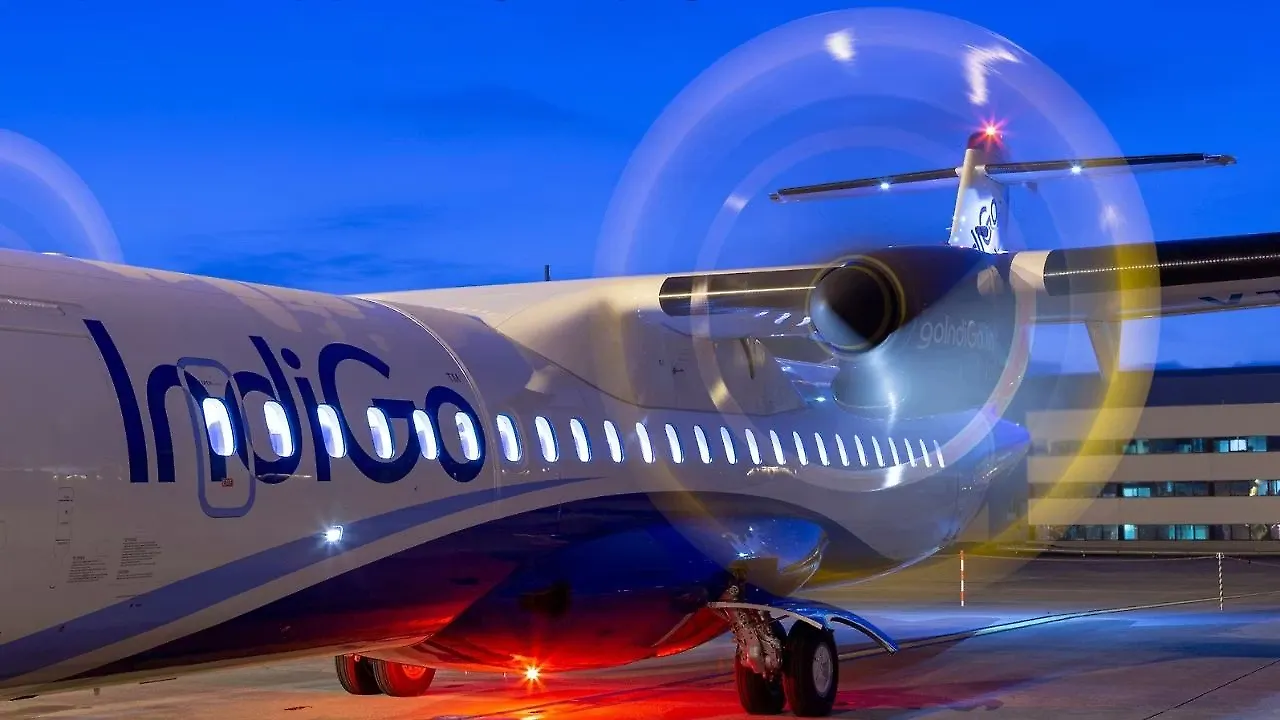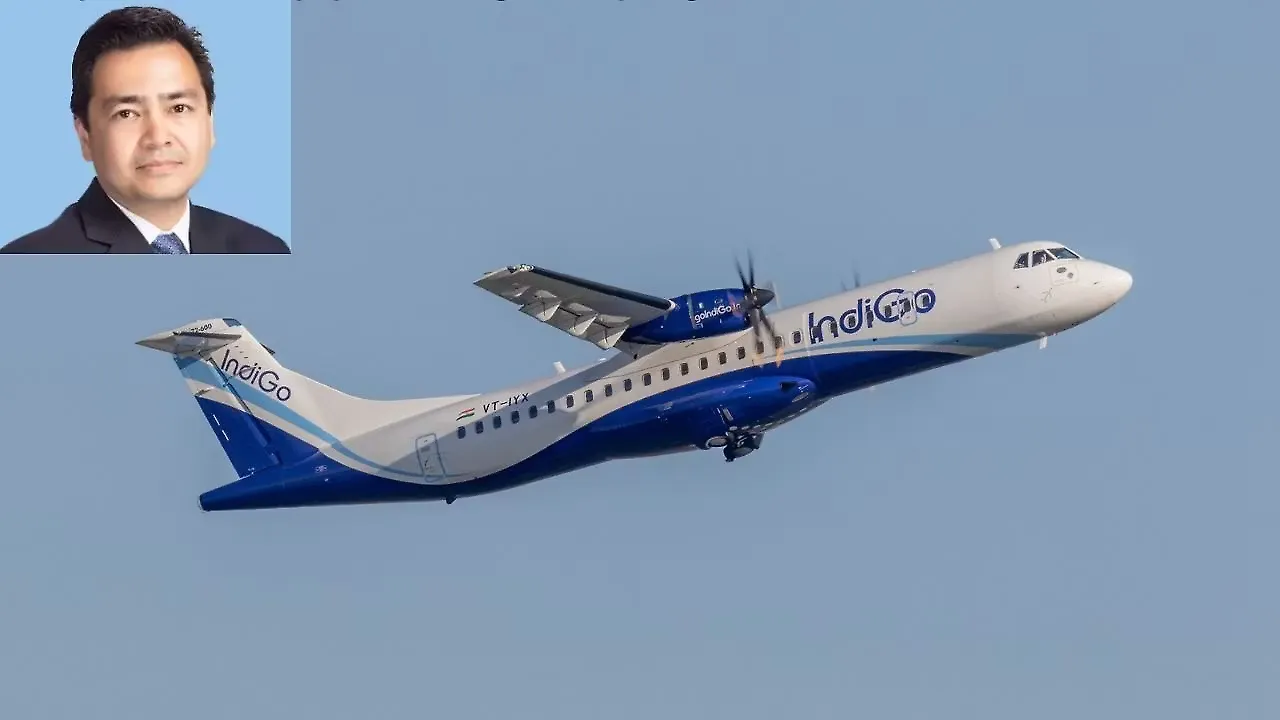
IndiGo, which straddles the Indian domestic aviation market like a colossus, with a market share now approaching 63%, is burnishing its green credentials to grow sustainably. One of the world's fastest-growing Low-Cost Carriers (LCC), its fleet today stands at over 320 aircraft.
The airline operates over 1,900 daily flights, connecting 81 domestic and 30 international destinations. With an average fleet of 3.5 years, it has the youngest fleet in the world for airlines, with over 100 aircraft, allowing it to reduce carbon emissions substantially. Due to its size and reputation as a well-run airline, its choices for sustainable aviation often attract attention.
Sustainable Focus
Speaking to Mobility Outlook, Gaurav M Negi, Chief Financial Officer of IndiGo, says the carrier’s fleet decisions reflected its focus on sustainability. Opting for the fuel-efficient Airbus A320 NEO family helped the carrier reduce its CO2 emissions by 20% per Available Seat Kilometres (ASK) compared to the 2016 baseline. This places it amongst the global leaders in the low emissions per unit and noise abatement category. As per Negi, the new jetliners have helped the carrier avoid more than one million tonne of CO2 emissions in FY23. Currently, 80% of IndiGo’s fleet comprises the latest generation A320 and A321 NEOs, which offer substantial fuel-efficiency benefits. Powered by the latest generation of commercial turbofan engines from CFM International and Pratt & Whitney, the NEO aircraft can potentially reduce fuel usage by 15%, cut Greenhouse Gas (GHG) emissions and are also 50% quieter compared to older generation aircraft.
The airline placed a firm order for 500 Airbus A320 Family aircraft this year, over and above its previous orders totalling around 480 aircraft. It has also added ten A320 NEOs to a previous order in 2019 for 300 aircraft. With this additional firm order, its order book stands at almost 1,000 aircraft, which are yet to be delivered and will continue into the next decade. The order book comprises a mix of A320NEO, A321NEO, and A321XLR aircraft.

Alternative Fuels
IndiGo’s long-term decarbonisation plans focus on the greater use of Sustainable Aviation Fuel (SAF), which can help cut fuel emissions. However, Negi cautions that “globally, and in the Indian context, SAF’s availability is a constraining factor.” IndiGo had earlier entered into a Memorandum of Understanding with the Indian Institute of Petroleum (Dehradun) and remains engaged with oil marketing companies working on these initiatives in India.
Negi says that IndiGo has also run pilot flights determining the feasibility of using biofuels, which not only reduce costs but also emissions. Additionally, through IndiGoReach, the airline’s Corporate Social Responsibility arm, an active programme runs 9,500+ biogas units scheduled to generate approx. 2.34 lakh Carbon Emission Reductions by Sept 2023. As per the carrier’s latest ESG report, commissioning biogas units has enabled the airline to offset about 121,000 CERs.
In-Flight Sustainability
Negi also says that at the operational level, the airline is making a series of investments towards more responsible flying, including single-engine taxiing, optimal climb and descent profile, introduction of electric ground vehicles, combo units, Electronic Flight Bags (EFB) and water conservation techniques on-board. All these efforts will further enhance the airline's sustainability profile.
The airline encourages its pilots to perform single engine taxi-runs to or from the runway for take-offs and landings at all aerodromes subject to operational considerations, resulting in fuel savings of approximately three kg per minute and reducing ground-level fuel burn and CO2 emissions by up to 20% and 40%, respectively. Using Ground Power Units (GPU) instead of the Auxiliary Power Unit (APU) fitted on the aircraft reduces fuel burn and increases the APU life. If the aircraft APU is operated for five minutes, it generates around 35 kg of CO2, which is saved by using the GPU for every flight instead.

Weight saving is an important consideration for all airlines, and IndiGo was the first airline in the region to introduce EFBs in the cockpit for its pilots in 2015. This move replaced paper charts and manuals with iPads, reducing 25 kg of weight. Since 2015, this initiative has helped the airline reduce its carbon footprint by approximately 2,500 tonne annually.
In continuation of the Less Paper Cockpit (LPC) programme approved by the Directorate General of Civil Aviation, IndiGo was authorised earlier this year to remove Technical Paper Manuals weighing 40 kg from each aircraft cockpit in its Airbus fleet. The initiative will decrease the usage of paper and help IndiGo further reduce its carbon footprint.
As part of its waste management programme, the airline is also running a project to upcycle discarded aircraft upholstery and crew uniforms into marketable finished products and reduce the volume of waste going to landfills. In FY23, the airline upcycled 5,000+ waste items, resulting in income generation for a community of women supported by the project. It also replaced over 83 million single-use plastics with biodegradable options in FY23.
Sustainability on Ground
Negi also says that the unprecedented onset of the pandemic in 2020 heightened the need for higher efficiencies while reducing the environmental impact. He says the airline leveraged its time and resources last year to become leaner and cleaner.
One of the successful projects implemented was the automation of ground support equipment, which reduced carbon emissions by almost 5% or the equivalent of 1,246 tonne, considering business proportionality. The airline has also been using Eco power wash as part of its engineering operations for more than a decade. Eco wash involves cleaning the aircraft engine, and a core engine wash offers benefits in lowering the Exhaust Gas Temperature, thus reducing fuel use and CO2 emissions.
In addition to this, Negi says, IndiGo has adopted various innovative solutions in both passenger and freight services, such as a modified Baggage Freight Loader (BFL) for cabin loading, battery swapping using a monorail crane, using a 10-tonne electrical tug instead of 20-tonne, battery-operated BFL, battery-operated baggage water cart, portable baggage transfer belt, implementing vehicle mounted transfer rollers and running trials of electric coaches.
The airline has implemented these initiatives in Kolkata, Delhi, Hyderabad, Kochi, Mumbai, and Bengaluru airports, with the benefit of not only reduced manhours per flight by 90 mins but also bringing in cost savings of over INR 15 crore over the last year. “This is a testament to the fact that investment in sustainable operations provides a return with respect to time and cost efficiencies over a while. So, bringing in sustainability will increase viability for airlines and airports in the aviation industry, which isn’t necessarily perceived as a sustainability-enhancing sector, Negi adds.
Also Read: